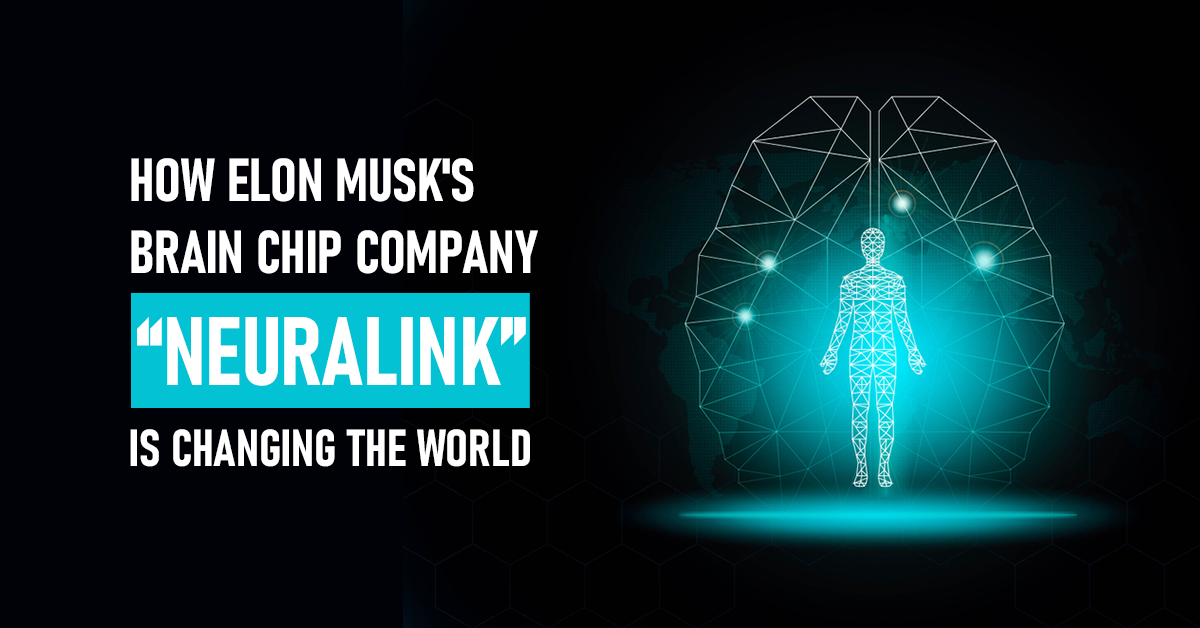How Elon Musk's brain chip company “Neuralink” is changing the world

Data Analyst
Experienced data analyst working with data visualization, cloud computing and ETL solutions.
February 10, 2023

It's not a big surprise that Elon Musk seems to own companies such as Tesla, SpaceX, and Twitter, which he recently purchased for approximately $44 billion. Did you also know that he leads a company called Neuralink that develops neural interfaces? That's right, you read it correctly. Everyone must be talking about it now so you might be wondering why. Musk's company has developed a chip that could help the disabled by embedding it in their brains. However, what does it do, and how does it work?
What is Neuralink developing?
The Neuralink device is equipped with a chip for processing and transmitting neural signals to people and devices such as computers and phones. Musk hinged on the Brain Control Interfaces startup Neuralink six years ago. The company is developing new products that record and possibly stimulate brain activity by implanting them in a person's brain. It has been developing a chip that can be transplanted into the human brain and communicate with a computer. This chip will track and activate brain activity.
It is a microchip powered by artificial intelligence that can read and record brain activity and assist disabled people in moving and communicating correctly, among other things. Interestingly, Musk stated in 2016 that the “chip would also allow people with paralysis to use smartphones faster with their minds than with their thumbs”. Using robotics, neurosurgeons would insert the chip Neuralink is developing surgically into the brain using a coin-sized device.
How does the Neuralink chip work?
It is a tiny chip permanently attached to a person's brain. It is made up of many small wires, each of which is said to be 20 times thinner than human hair. A total of 1,024 electrodes are mounted on these wires that extend into the brain, monitoring what the brain is doing and electrically stimulating it. Additionally, scientists can use the chip for wireless data transmission to computers, facilitating further research.
Neuralink chip: What it will do?
According to reports, the chip can detect your thoughts and even allow you to communicate with machines without putting your mouth open. The chip is believed to enable individuals to manage virtual devices such as smartphones and computers. During a much-anticipated public update on the device, Musk declared that he wants to be extremely cautious and certain that it would function properly when implanted in humans. It is hoped that Neuralink will function by integrating tiny electrodes into the nervous system. This connects human brains to computers without using any other physical relationship. You'll receive much more than a way to control your streaming service through a brain-computer interface (BCI). When sufficiently matured, it could communicate with loved ones, search the Internet, and interact with AI directly.
It has even been tested on animals and the company has been collaborating on it for a long time. The Neuralink chip has been implanted successfully in the central nervous system of a monkey and a pig. The firm announced today that it plans to begin human testing of a brain chip in around six months. Neuralinks are probably going to be installed in humans in about six months,” Musk said. The company claims its newest tech can remedy the loss of function, blindness, memory problems, and other neurodegenerative disorders. According to reports, it can enable "superhuman vision" or allow individuals to communicate with machines.
What Are the Benefits of Neuralink?
Neuralink can be used to connect the human brain to technology. This means that paralyzed people can use their brains to operate their phones and computers. The chipset wires will be allowed to both observe and electrically stimulate brain activity.
To understand how the chip works, you must first comprehend the science behind the nervous system. Neurons in the human brain send signals to body cells such as muscles, nerves, glands, and other neurons. Nerve cells are composed of three components dendrites, somas, and axons, each with its function. The signals are received by the dendrite, processed by the soma, and transmitted to the other cells by the axon. The neurons are linked by synapses, which release neurotransmitters. Communication via text and voice messages is the primary function of the device. The device can also be used to draw pictures, take photographs, and perform other tasks.
It has the potential to be used to continue operating encephalopathy and communicate the human mind and technology. This means that patients who are paralyzed can use their phones and laptops directly with their brains.
These chemical compounds then travel to the dendrite of another neuron cell, causing the flow of current among neurons. The electrodes, a component of Neuralink, will read electrical signals developed by neurons in the brain and output them in the form of an action or movement.
"We already have a monkey with a wireless implant in their skull and tiny wires which can play games with his mind," Musk said during a lengthy and in-depth interview on Clubhouse. Improved neural interface technology, such as Neuralink, could be used to study and treat severe neurological diseases such as Parkinson's and Alzheimer's. Musk stated in 2019 that Neuralink has the potential to "solve a lot of brain-related diseases."
Is it possible to remove this chip? Is it secure?
The company claimed earlier this year that it had made a few serious attempts and is secure to implement in someone's brain to cure diseases. "Neuralink is functioning well in monkeys, and we're doing a lot of research to ensure that it's very durable and secure and that the Neuralink device can be safely removed." The company has yet to receive FDA approval to sell the device, and Elon Musk has stated that he is waiting for the federal government to approve his latest tech.
The Dispute Over Neuralink
While Musk's organization has been trialing its chip on monkeys, it was only last year that it was approved for use. The firm has been accused of exposing its monkeys to unauthorized, unfair treatment and intense suffering during chip injection tests.
According to Business Insider, an animal-rights organization filed an official complaint with the US Department of Agriculture, claiming that monkeys suffer "extremely as a result of inappropriate animal care and the extremely aggressive experimenting with new implants used during the experiments."
According to the group, only seven of Neuralink's 23 monkeys did survive the assessments and were transmitted to a Neuralink facility in 2020, while 15 died. According to the report, Neuralink stated that only eight animals were euthanized. An earlier video showed a monkey on a computer playing the video game Pong with a Neuralink chip inserted into its head in April 2021.
What's next for neuralink?
Neuralink has yet to obtain US regulatory approval to proceed to human trials, in contrast to competitor Synchron, which has less ambitious medical advancement goals. Neuralink has missed Musk's openly declared deadlines for beginning human trials but has applied to the Food and Drug Administration to do so this year. Musk stated last week that he believes Neuralink will be able to begin human clinical trials within six months.
A Direct Link Between the Brain & Everyday Technology
Our technology's initial goal is to assist people with paralysis in regaining independence through computer and mobile device control. As a result, our devices are currently being designed to allow people to communicate more efficiently through text or automatic speech, to follow their curiosity on the web, or to express their imaginations through photography, art, or writing apps.
What is the value of Neuralink?
In 2017, Elon Musk raised $27 million in investment funding for Neuralink, according to Business Insider. The corporation was only about a year old at the time.
"According to a report submitted by the SEC on Friday, Neuralink sold $27 million in equity out of a cumulative offering of $100 million. According to the form, equity was first managed to sell on August 15, 2017, to 12 unnamed investors, "According to Business Insider. However, it was recently reported that they could raise an additional $39 million in investment.
However, aside from Musk and Neutralink's president Jared Birchall, it is still being determined who has invested. At the time, Musk even tweeted that "Neuralink is not seeking investors." As a result, unlike his other company Tesla, Neuralink cannot be traded on the stock exchange. For the time being, the company will likely remain private rather than public. Since its inception in the summer of 2016, the company has kept its cards close to its chest.
Conclusion
Beyond the close-knit group of insiders, the general public has had to rely on Musk's tantalizing public comments about the company. Musk has discussed the need for a "neural lace" capable of turbocharging the human brain. He has also stated that such a device will aid people in combating existential threats posed by AI. A device like this would also encourage them to engage in what he termed "consensual telepathy." Musk's fourth corporation is Neuralink. He also serves as the founder of Tesla, SpaceX, and OpenAI, a non-profit AI research organization. He also runs The Boring Company, a tunneling startup.













